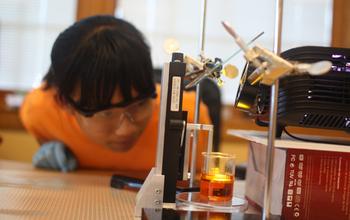Nelson Mandela once stated, “Education is the most powerful weapon which you can use to change the world.” We have seen major changes in education with the development and globalization of technology; however, the world we live in is transforming so rapidly that in the status quo, we may even have the ability to ‘engineer’ our own education. So, how this even possible? The implementation of the 3D printer in the classroom can be utilized to reach out to a wide array of students who learn at different paces, and it can allow for increased creativity and problem solving skills.

The proper usage of the 3D printer requires a thorough understanding of design, purpose, and implications. Students must continue to question and self-evaluate, and will begin to ask questions: “Are there any repercussions or ethical issues surrounding 3D printing holistically, and how does my creation fit into this issue?” “How does/will this item impact society, and what are some improvements that can be made?” Fostering these problem solving and critical thinking skills at a young age for students is essential, and should become a larger focus of education. Rather than simply rote memorization, utilizing this incredible tool like the 3D printer will create a much more meaningful education experience for the students. But the benefits go both ways, as teachers will be able to create lesson plans that will leave a lasting impact and will allow for greater utilization of technology in the classroom.
It is essential that this technology diffuses to all classrooms all around the world, as it will enhance the student’s educational experience by helping them understand life skills like problem solving and ethical concerns, while simultaneously allowing teachers to create meaningful and enjoyable lesson plans. The power to ‘engineer’ our education is in our hands.


